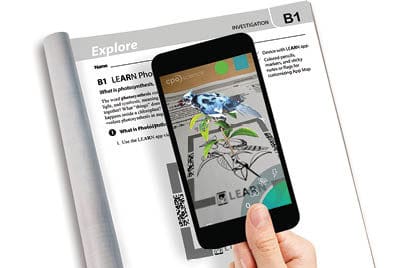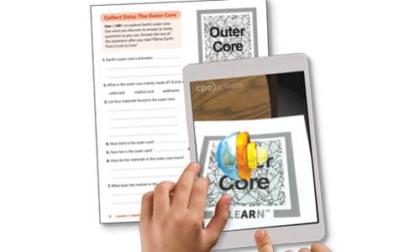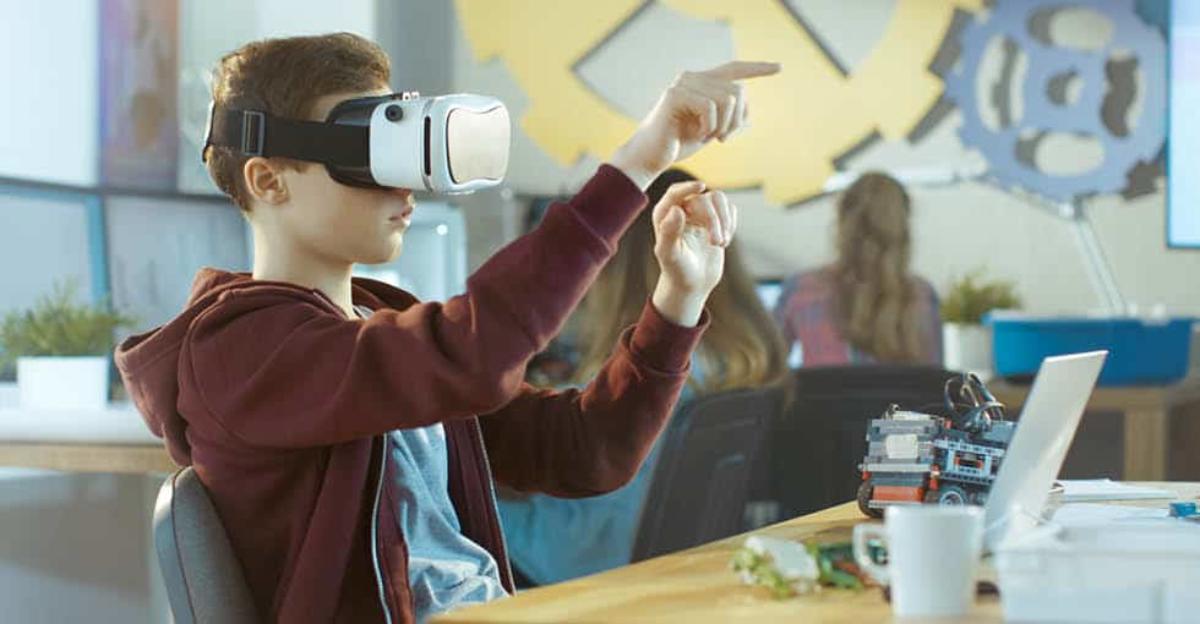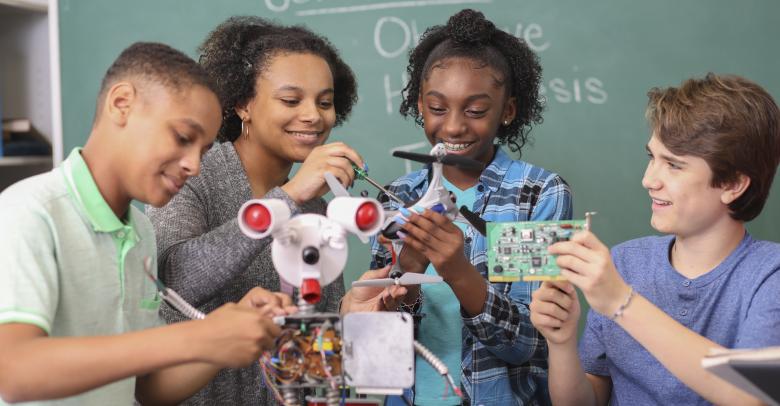Virtual reality (VR) and augmented reality (AR) have become a part of the conversation in the world of educational technology and a part of new additions to curriculum. Read about the differences between the two and how educators are introducing AR to their classrooms.
The introduction of new technology has many educators feeling overwhelmed at all the changes. However, with the changes comes the potential for increased excitement and creativity, along with the chance to interact with students in new ways.
Differences Between VR and AR
Virtual reality (VR) and augmented reality (AR) both offer unique ways to connect with visual information, but what makes each of them stand out?
What is VR?
Virtual reality is a computer-created simulation of an all-new environment or situation through the use of a headset. Most headsets are created to be used with a smartphone device, which is put into the headset and in front of the user’s eyes to be used as the screen. Blocking vision of the real world, the headset places the created virtual reality in front of you instead. The technology allows the wearer of the headset to feel as if they are truly moving around and interacting with the new, virtual environment.
What is AR?

CPO Science Link Energy Quest
Augmented reality uses technology and a visual trigger (much like a QR code) to layer a computer-generated enhancement over top of the existing reality. This is usually accomplished through the camera of a laptop, smartphone, or tablet, allowing the user to interact with digital components that are blended into the real world.
How Are They Different?
The differences between VR and AR come down to their goals. Virtual reality seeks to immerse the user in a computer-generated reality, while augmented reality seeks to add layers or elements to the existing reality in a meaningful way.
Looking for ways to incorporate games into your lesson plans?
Using AR in the Classroom
Augmented reality has the ability to enhance an environment through the addition of digital images or graphics. This has made it an appealing option for those looking to modernize their curriculum and take advantage of the latest in versatile, available technology like laptops, tablets, and smartphones.
Some of the benefits of interacting with classroom concepts through the use of technology include improved engagement, participation, and experimentation. Students can gain a more concrete grasp of a concept when the information is applied in a memorable or interactive way.
Lesson plans and textbooks that incorporate augmented reality give students the option of taking in information through a new, more hands-on, lens. For example: a simple drawing of an animal can be transformed through the use of a smartphone or tablet, creating a three-dimensional image that could showcase how the animal moves and behaves.
Read more about Benefits of Using AR in the Classroom

ScienceFLEX Our Active Earth
Augmented Reality for Science Curriculum
The great news is that, as an educator, you don’t need to be a technology expert to incorporate augmented reality features into your curriculum. Some of the latest technology available includes the newest titles from CPO Science Link, and the brand new modular ScienceFLEX. In both programs, augmented reality triggers are built into the investigations, allowing students to interact with a three-dimensional models.
CPO Science Link’s Energy Quest title engages students in 3D models of cells, and helps them gain a better understanding of all its parts and systems. The addition of three-dimensional images in the CPO Science Link Energy Quest curriculum helps to make complicated concepts like cellular respiration and photosynthesis easier to grasp, and more hands-on.
If you’re interested in learning more about what Energy Quest has to offer, follow the link below:
Learn More: CPO Science Link Energy Quest
ScienceFLEX, a modular supplementary science solution for grades 3-5, uses augmented reality to give students a unique look at the world around them. Take a trip through the inside of a workings of a simple machine or peel back the layers of the Earth to see what lies beneath.






Leave a Reply